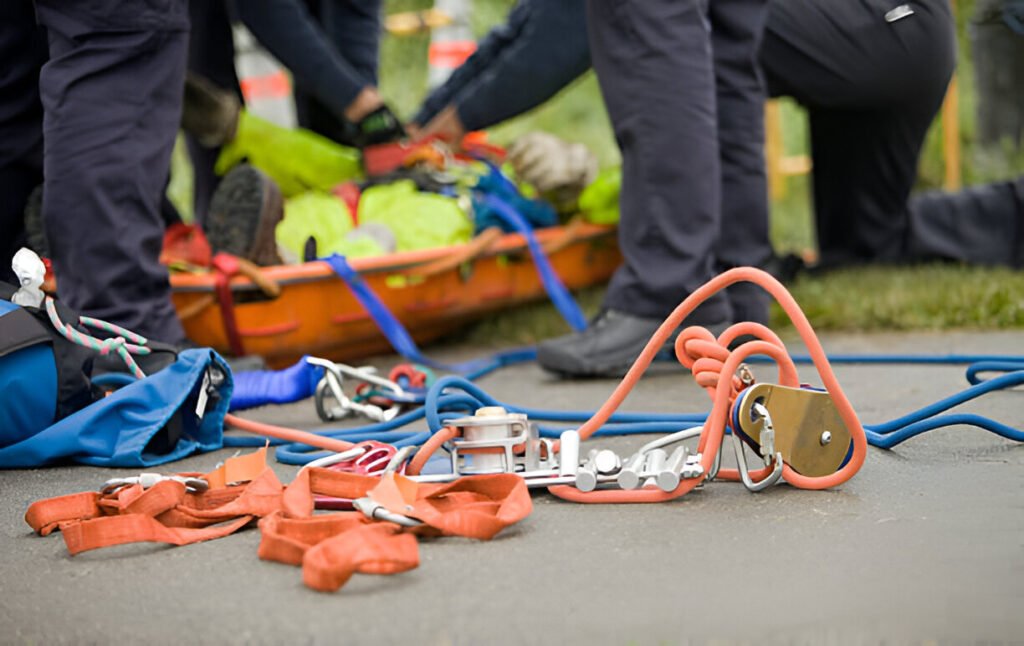When it comes to emergency response, having the right rescue equipment can make the difference between life and death. From natural disasters to industrial accidents, rescue tools are critical in ensuring safety and saving lives. This guide breaks down essential equipment that every emergency responder or safety enthusiast should know about, explaining their importance, functionality, and scenarios where they’re vital.
Personal Protective Equipment (PPE)
Personal protective equipment is the foundation of rescue operations, safeguarding rescuers from potential harm. Each piece of PPE is designed to address specific risks.
Helmets and Head Protection
Rescuers frequently find themselves in environments with falling debris, hazardous materials, or unstable structures. Protective helmets shield against head injuries and enhance visibility, often incorporating built-in lights or reflective material.
Respiratory Protection
Smoke, toxic gases, and particulate matter can compromise a rescuer’s ability to breathe safely. Respirators, whether disposable masks or full-face models, protect the wearer by filtering dangerous substances while allowing clear communication during operations.
Protective Clothing
Protective clothing varies depending on the rescue scenario, from fire-resistant suits to waterproof jackets. These garments reduce exposure to heat, chemicals, and sharp objects, ensuring the rescuer’s mobility.
Tools for Search and Rescue
Rescuing trapped individuals often requires specialized equipment. These tools help responders locate victims and safely extract them from hazardous environments.
Thermal Imaging Cameras
Thermal imaging cameras detect heat signatures when used in fires or low-visibility conditions. This allows rescuers to pinpoint the location of individuals in smoke-filled buildings, rubble, or at night.
Hydraulic Spreaders and Cutters
Commonly used in vehicle extrication, hydraulic tools provide the power necessary to cut through or pry apart heavy materials like metal and concrete. Their precision allows for the safe recovery of individuals without worsening injuries.
Rope and Harness Systems
Rope rescue systems are indispensable for mountainous terrains, high buildings, or confined spaces. They provide safe and controlled access to individuals stranded at heights or in inaccessible locations.
Lifting and Stabilization Equipment
Stabilization tools are essential when dealing with collapse scenarios, overturned vehicles, or heavy debris. These tools ensure the safety of both rescuers and victims during operations.
Cribbing and Struts
Wooden or metal cribbing blocks and struts stabilize vehicles or structures, preventing unwanted movement during rescue efforts. They are crucial for ensuring safety when lifting or cutting components in unstable areas.
Inflatable Lift Bags
Inflatable lift bags are a versatile tool in the rescue arsenal. They are designed to lift heavy loads, such as vehicles or collapsed structural elements, with minimal effort. Their compact size and immense lifting capacity make them essential in scenarios where other equipment cannot easily fit.
Water and Air Rescue Essentials
Emergencies involving water or air require unique tools designed for swift and effective action.
Rescue Boats
Floods, maritime accidents, or swift water scenarios demand durable, maneuverable rescue boats. These vessels often come equipped with space for medical supplies and tools, allowing responders to safely transport victims.
Throw Bags and Life Vests
Throw bags, filled with floating rope, are a simple yet invaluable tool for water rescues. On the other hand, life vests are critical for victims and responders alike, ensuring buoyancy and safety in treacherous waters.
Air Rescue Harnesses
Air rescue harnesses allow helicopters or high-line systems to extract safely victims trapped on cliffs, mountains, or other elevated locations. They are designed for secure fastening and rapid deployment.
Medical and First Aid Equipment
Safety doesn’t end with extraction. Immediate medical attention can stabilize victims and improve survival chances. Medical equipment is an essential part of every rescue kit.
Trauma Kits
Packed with dressings, splints, and hemostatic agents, trauma kits address a wide variety of injuries. Responders can quickly treat wounds, apply pressure, or stabilize fractures on-site.
Automated External Defibrillators (AEDs)
When cardiac arrest strikes, an AED can restart the heart. Compact and easy to operate, AEDs are especially crucial in high-stress situations where every second counts.
Effective Lighting and Communication Tools
Rescue operations often take place in poorly lit or chaotic environments. Reliable lighting and communication tools can significantly improve safety and coordination.
Portable Floodlights
Floodlights illuminate large areas, ensuring responders can see hazards and victims. Many lights are portable and operate on rechargeable batteries, making them perfect for field use.
Radio Systems
Clear communication is essential during emergencies. Two-way radios allow responders to coordinate their efforts efficiently, even in rugged or remote locations where cell service may be unavailable.
The Importance of Training
No piece of rescue equipment is truly effective without proper training. Responders must know how to operate tools and understand each device’s risks, limitations, and best applications. Regular drills and maintenance routines ensure that equipment is ready for disaster strikes.
Conclusion
Equipping yourself with the right rescue tools is vital in preparing for emergencies. Every device enhances safety and ensures successful outcomes from personal protective gear to advanced lifting mechanisms. Investing in top-notch equipment, maintaining readiness, and focusing on training will give rescue teams the upper hand to tackle challenging scenarios.

